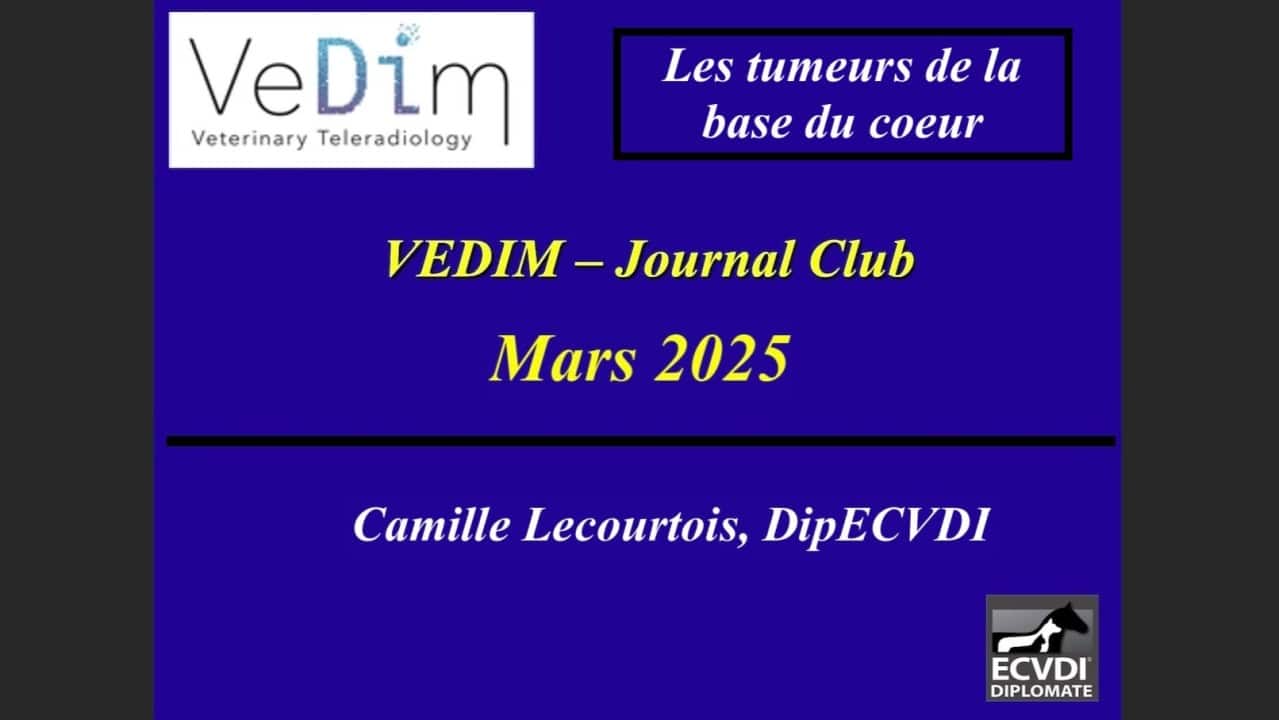The VEDIM team’s Journal Club activity rotates: in March, it was Camille Lecourtois ‘s turn to present articles on imaging tumors of the base of the heart.
Tumors of the base of the heart in dogs and cats represent the 2nd most common type of cardiac tumor after tumors of the right atrium. They are located in the dorsocranial portion of the heart. They are slow-growing tumors, so patients are often asymptomatic until the tumor reaches a significant size, causing cardiac decompensation.
Chemodectomas are the most common tumor of the base of the heart (60%). Coupled with ectopic thyroid carcinomas (12%) and non-specific neuroendocrine tumors (12%), neuroendocrine tumors account for 84% of heart base tumors. Hemangiosarcoma is less frequently observed (16%).
Although echocardiography is the most frequently used diagnostic tool, CT scans can be used to better determine the location and extension of the mass, as well as to perform a locoregional extension assessment.
Tumor location, post-contrast attenuation and the presence of neovascularization are the 3 main criteria for distinguishing neuroendocrine tumors from hemangiosarcomas on CT.
– Neuroendocrine tumors are predominantly found between the aortic arch and the cranial vena cava (57%) and dorsally to the pulmonary trunk or between the pulmonary arteries (48%). Hemangiosarcomas are located cranioventrally to the aortic arch, ventromedially to the cranial vena cava (75%).
– Neuroendocrine tumors show twice the post-contrast attenuation of hemangiosarcomas (110 HU vs. 51 HU). They all show predominantly heterogeneous enhancement.
– In contrast to hemangiosarcomas, neovascularization is frequently observed in the margins of neuroendocrine tumors.
Moreover, a mass effect is very frequently observed (88%), and invasion of adjacent structures may be objectified (cranial vena cava for neuroendocrine tumors, pericardium for hemangiosarcomas). In 40% of cases, pulmonary nodules are observed, suspected to be metastatic. Effusion (pleural, peritoneal, pericardial) is observed in 20% to 40% of tumors at the base of the heart, and mediastinal lymphadenopathy (sternal, mediastinal cranial) is frequently noted (64%).
CT is an interesting tool for characterizing cardiac base tumors (location, appearance, invasion, metastatic potential), as well as for differentiating neuroendocrine tumors from hemangiosarcomas. Nevertheless, differentiation within neuroendocrine tumours between chemodectomas and ectopic thyroid carcinomas remains limited. Cytology and histolopathology remain the examinations of choice to confirm the nature of cardiac masses.





